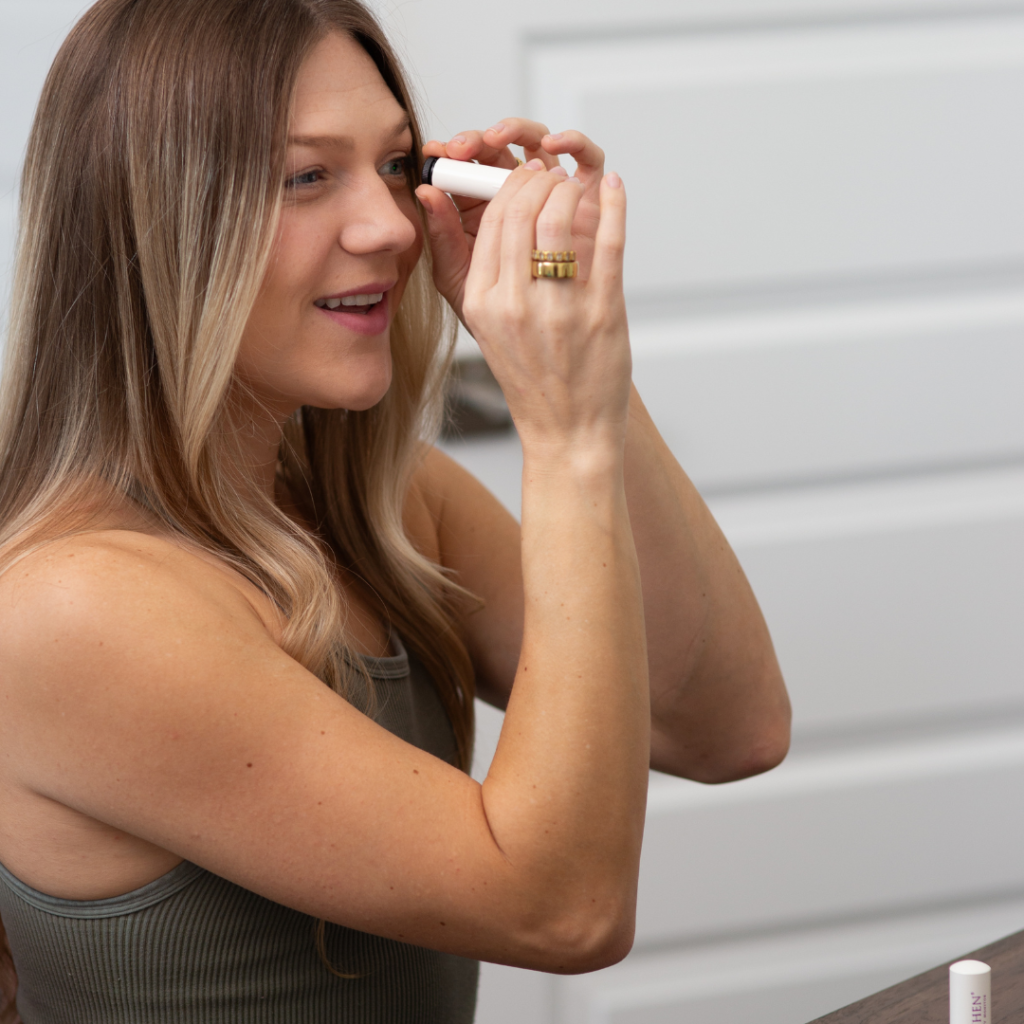

For many women trying to conceive, pinpointing the right time for ovulation feels like playing a guessing game. There are various ways to track ovulation, from checking your basal body temperature to using urine-based ovulation prediction kits (OPKs), but that only adds to the confusion.
Among these options, saliva ovulation tests are an often-overlooked but highly effective alternative. But how do they stack up against urine tests? And more importantly, which one is better for understanding your fertility window?
In this article, we’ll break down the differences between saliva and urine ovulation tests, weigh their pros and cons, and explain why the KNOWHEN® Advanced Ovulation Test is changing the way people track their fertility
Ovulation occurs when an egg is released from the ovary, typically around the midpoint of a woman’s menstrual cycle. Since sperm can survive for several days inside the female reproductive tract, knowing when ovulation occurs is important for timing intercourse and maximizing the chances of conception.
There are several ways to track ovulation, including basal body temperature charting, cervical mucus observations, and hormone-detecting kits. Saliva and urine ovulation tests focus on hormonal changes that indicate an upcoming ovulation window.
When you’re trying to conceive, timing is everything. Ovulation predictor kits (OPKs) give women unprecedented insight into their fertile window.
However, if you’re using these seemingly simple test strips to track your fertility, it’s important to understand the sophisticated endocrine science behind them.
Related post:
OPKs measure levels of luteinizing hormone (LH) in your urine. LH is produced by your pituitary gland throughout your cycle, but approximately 24-36 hours before ovulation, your body experiences a dramatic spike in LH production.
This surge triggers the release of a mature egg from your ovary.
OPKs contain antibodies that specifically bind to LH molecules in your urine. When sufficient LH is present, these antibodies build up on the test line, rendering it visible to the unaided eye.
The intensity of the test line directly correlates with the concentration of LH in your urine—the higher the LH level, the darker the line.
Many women new to OPKs expect them to work like pregnancy tests, where any visible line indicates a positive result. However, OPKs require a more nuanced interpretation.
Your body always produces some LH, so you’ll typically see two lines on the test strip: a control line and a test line.
The test is only considered positive when the test line is as dark as or darker than the control line, indicating that LH levels have reached the threshold, suggesting ovulation is imminent.
The LH surge occurs between 10 AM and 8 PM, so testing in the afternoon or early evening often yields the most accurate results. Your LH surge can last anywhere from a few hours to several days, but most women will see their results within a 48-hour window.
What’s fascinating is how OPKs can reveal individual patterns in your cycle. Some women experience a gradual buildup in LH, with test lines darkening progressively over several days.
Others might see a sudden surge, with tests going from clearly negative to strongly positive within 24 hours. Neither pattern is better or worse—it’s simply your body’s unique hormonal signature.
Related post:
Understanding what can interfere with OPK results helps ensure accurate testing. Certain medications, particularly those containing synthetic hormones or hCG, can cross-react with the antibodies in the test.
Excessive fluid intake can dilute urine too much, potentially masking an LH surge. Even the time of day you test matters—early morning urine often contains lower concentrations of LH because the hormone accumulates in your system throughout the day.
Saliva ovulation tests, like the KNOWHEN® Advanced Ovulation Test, work by detecting hormonal changes in saliva. As estrogen levels rise before ovulation, saliva forms a distinctive fern-like pattern when dried and observed under a mini-microscope.
KNOWHEN® has pioneered FDA-cleared saliva-based ovulation tracking in the United States that prioritizes accuracy, ease of use, and cost-effectiveness.
Related post:
With its mini-microscope technology, KNOWHEN® detects subtle changes in saliva patterns, providing clear, accurate results every morning.
The choice between saliva and urine ovulation tests depends on your priorities:
If you prefer a disposable, quick-to-use test, urine-based OPKs may be sufficient, but keep in mind their higher long-term costs and false positive potential.
If you want a natural, reusable, and highly accurate test that offers a longer fertility detection window, the KNOWHEN® Saliva Ovulation Test is the better choice.
While urine ovulation tests provide an effective but short-term and recurring-cost solution, saliva ovulation tests like KNOWHEN® offer a more sustainable, cost-effective, and precise approach to fertility tracking.
With its FDA clearance, high clinical accuracy, and smart app integration, KNOWHEN® stands out as the best choice for women looking to take control of their reproductive health naturally.
Are you ready to track your fertility with confidence? Switch to KNOWHEN® and experience a smarter way to predict ovulation—naturally, affordably, and accurately.
DISCLAIMER: The information shared here is meant to inform and educate, not to diagnose or replace professional medical care. For any health concerns or medical issues, always consult with certified healthcare providers who can properly and medically evaluate your specific fertility health situation.
Related post:
Sources:
https://www.sciencedirect.com/science/article/pii/S0015028299003659
https://pubmed.ncbi.nlm.nih.gov/2649824
https://www.fda.gov/medical-devices/home-use-tests/ovulation-saliva-test
https://medlineplus.gov/ency/article/007062.htm




The KNOWHEN® Ovulation Test tracks your ovulation using only a drop of your saliva. It identifies your five (5) most fertile days and the best days in your ovulation cycle if you’re trying to conceive.